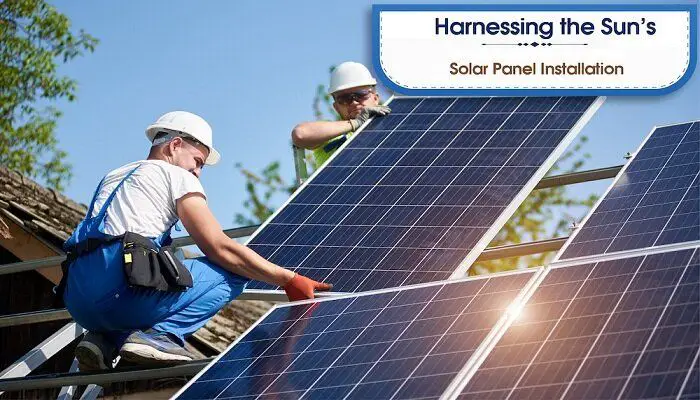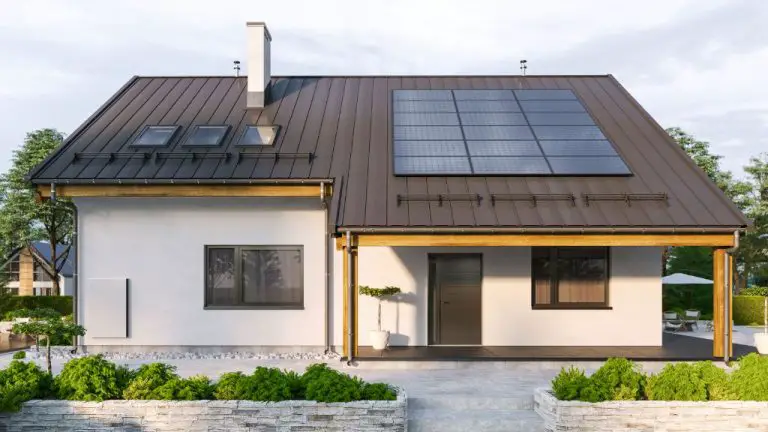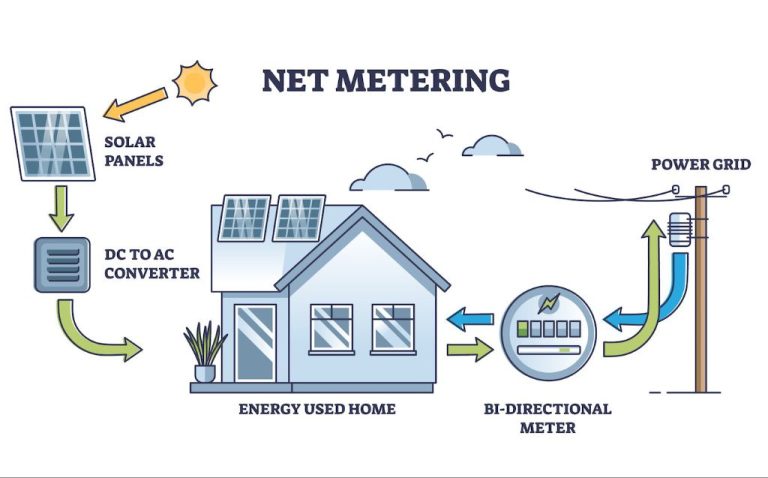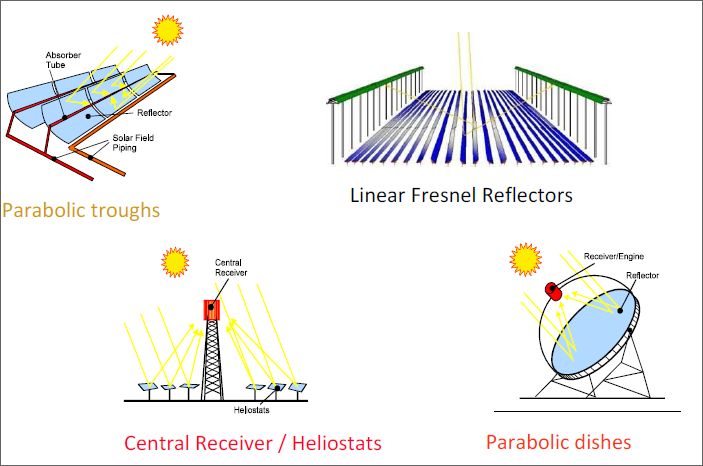How Many Kw Solar To Power A Home?
With electricity prices on the rise, more homeowners are considering installing solar panels to reduce their reliance on the grid and take control of their energy costs. Solar power uses energy from the sun to generate electricity through photovoltaic (PV) panels. This clean, renewable energy can be used to power all or part of your home during the day, while any excess energy produced is exported back to the grid.
For many homeowners, the big question is: how many kilowatts (kW) of solar capacity do I need to power my house? This depends on your location, roof size, electricity usage, and budget. This article will walk through the key factors in determining the right solar system size for your home.
Average home electricity usage
The average American home uses about 877 kWh per month, which equals about 30 kWh (30,000 watt-hours) per day. This can vary significantly based on the size of home, number of occupants, appliances used, and climate where you live. Homes in hot southern states tend to use a lot more electricity for air conditioning in the summer, while homes in cold northern states use more electricity for heating in the winter.
On an annual basis, the typical single family home in the U.S. consumes 10,649 kWh. The range can be from as low as 5,000 kWh per year for an efficient apartment to over 25,000 kWh per year for a very large home. Knowing your specific home’s electricity consumption from past utility bills can help refine the calculations. Overall, the national average provides a reasonable starting point.
Factors affecting solar needs
When calculating how many solar panels and kW your home needs, there are several key factors to consider:
Location
Where you live plays a big role in solar needs. The amount of sun exposure based on latitude affects solar panel output. Southern states like Arizona, New Mexico and Florida generally need fewer solar panels than northern states like Maine or Washington.
House size
Larger homes with more square footage tend to consume more electricity, therefore needing a larger solar system. A 5,000 square foot home would likely need double the solar panels of a 2,500 square foot home.
Appliances and devices
The types of appliances, electronics and devices in a home also impact energy use. Homes with electric vehicles, pools, hot tubs and HVAC systems require much more solar energy than homes that rely solely on natural gas or propane.
Calculating solar panel kW needs
Figuring out how many kW of solar panels you need for your home requires some calculations based on your energy usage and solar resources. Here are the main factors to consider:
Average electricity usage
First, examine your average daily kilowatt-hour (kWh) electricity usage over a full year. Your utility bill will show this information. Calculate your average daily usage by dividing your annual usage by 365 days.
Hours of peak sunlight
Next, determine your location’s solar resources using solar maps to find the average peak sun hours per day. This refers to the equivalent number of hours per day with full unobstructed sunlight.
Panel generation capacity
Then, determine the kW capacity of the solar panels you plan to install. Standard panels are around 300 watts, so a 5 kW system would have about 17 panels (5,000 watts / 300 watts per panel = 16.67 panels).
Simple calculation
To determine the kW solar array size needed, use this simple formula:
Average Daily kWh Usage / Hours of Peak Sunlight = kW of solar panels needed
For example, if your average usage is 30 kWh per day, and you get 4 peak sunlight hours, you would need a 7.5 kW solar array (30 kWh / 4 hours = 7.5 kW).
More complex analysis
For a more thorough analysis, account for other factors like your roof’s orientation, tilt, and shading, as well as the panels’ temperature coefficient and estimated losses. A solar specialist can run an exact calculation for your specific home and conditions.
Grid-tied vs off-grid
For a grid-tied solar system, the array size mainly depends on offsetting your current usage. For off-grid solar, size the system to match your full energy needs with battery storage capacity.
Return on investment
When determining system size, run the numbers to optimize your return on investment timeline. A smaller system will take longer to pay back through electricity bill savings, while a larger system costs more upfront.
Typical Solar System Sizes
When determining the system size needed to power a home with solar panels, a good rule of thumb is to aim for between 3-8 kW. The average residential solar system size falls around this range:
– Smaller homes (under 2,000 sq ft): 3-5 kW system
– Average sized homes (2,000 – 3,000 sq ft): 5-7 kW system
– Large homes (over 3,000 sq ft): 6-8+ kW system
To put it into perspective, 1 kW of solar can generate around 3-5 kWh per day depending on location and panel angle. So a 5 kW system could generate 15-25 kWh daily which is enough to power most average homes. The key is properly sizing your system based on your specific energy usage, roof space and local conditions. Oversizing can lead to wasted energy while undersizing won’t meet your electricity needs.
Panel efficiency and placement
The efficiency rating of solar panels indicates how much of the sun’s energy they can convert into usable electricity. Most residential solar panels today have efficiencies between 15-22%, with higher end panels approaching 25%. Higher efficiency panels generate more electricity from the same amount of roof space. But they are also more expensive, so you have to balance efficiency and cost.
Another factor is the angle and direction your roof faces. In the northern hemisphere, south facing roofs at a tilt angle close to your latitude receive the most sunlight. East and west facing surfaces only get direct sunlight for part of the day. North facing surfaces get reflected light but produce much less energy. Optimizing panel placement and angle can maximize electricity generation from your available roof space.
Battery Storage
Adding battery storage allows solar panel systems to store excess electricity generated during the day for use at night or during power outages. There are several battery options to consider:
Lead acid batteries – These are cheaper but less efficient than lithium-ion batteries. They last 3-5 years typically. Useful for short-term backup power storage.
Lithium-ion batteries – More expensive but with longer lifespans of 5-10 years. Allow for deeper discharge and more storage capacity. Better for regular daily cycling.
Saltwater batteries – An emerging and more eco-friendly option, but shorter lifespan of 7-10 years. May make sense for some eco-focused homeowners.
Battery storage capacity is measured in kWh. The size needed depends on your home’s energy use and desired backup coverage time. Typical capacities are 5-10kWh for partial home backup or 10-20kWh+ for full home backup during an outage. Costs range from $5,000-$15,000 installed.
Batteries aren’t essential but provide energy independence and resilience. Evaluate costs, lifespan, and potential incentives or tax credits in your area.
Net Metering and Selling Back
Net metering allows homeowners with solar panels to send excess electricity they generate back to the grid. This spins the home’s electricity meter backwards, reducing the net amount of electricity purchased from the utility company.
Many utilities are required by law to offer net metering. When your solar system produces more power than your home is using, the excess kilowatt-hours are fed back into the grid. This earns you credits that roll over month-to-month, offsetting times when your solar panels produce less than what your home consumes.
At the end of the 12-month net metering period, some states require the utility company to pay you for any excess credits earned. This can effectively turn your rooftop solar panels into a small revenue stream. However, credits are usually valued at the utility’s lower wholesale rate, not the higher retail rate that electricity is sold for.
The value of net metering varies greatly depending on your specific utility company, electricity rate plans, and state policies. But overall, net metering makes solar power systems more economical by reducing wasted electricity and providing revenue for overproduction.
Costs and Incentives
Installing a home solar system requires a significant upfront investment. However, there are ways to reduce the costs through tax credits, rebates, and other incentives.
The average cost to install a solar system ranges from $15,000 to $25,000 before incentives. The final price depends on factors like your location, roof type, panel efficiency, and the size of the system.
The largest incentive is the federal solar tax credit, which allows you to deduct 26% of the system cost from your federal taxes. Many local and state governments also offer additional rebates and credits to make solar more affordable.
Some utilities offer net metering programs that allow you to get bill credits for excess solar energy sent back to the grid. This can help offset the cost over time.
Additionally, many solar companies offer financing options to pay for the system over time, which spreads out the costs. Loans and solar leases allow you to reap the benefits of solar energy without a large upfront payment.
With the right incentives and creative financing, installing solar panels can pay for itself within 5-10 years through energy savings. The long-term return on investment makes solar power an economically smart home upgrade.
Conclusion
When deciding how many kW of solar panels to install on your home, the most important factors to consider are your home’s average electricity usage, your budget, and any solar incentives or net metering programs available in your area. Most homes require between 4-8kW to offset their electrical needs, but an accurate assessment of your specific home energy use and solar goals is key. More panels and higher system capacities allow for greater energy production and independence, but also come at a higher upfront cost. Work with a qualified solar installer to properly size your system based on your electricity bills, roof space, and long-term energy objectives. With the right solar array size and proper installation, you can maximize returns while reducing your carbon footprint.






